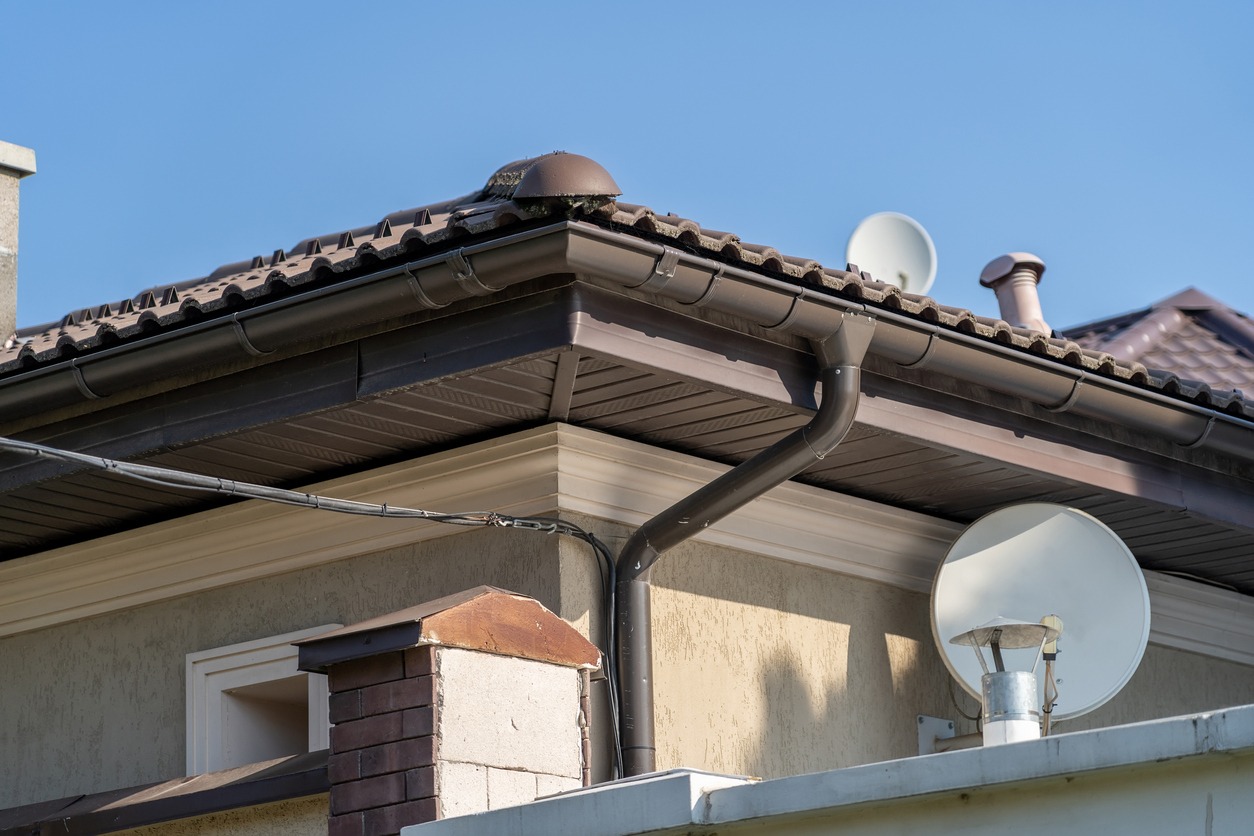You can install gutters with stucco fascia and get the desired durability and efficiency. However, you should ensure proper installation to avoid early damage and moisture leaking issues. You will have to follow the same procedure for the most part when installing gutters with stucco fascia. You can use the same material, but you should take extra measures to achieve integrity and maximum durability. Stucco fascia will have some unique concerns you have to be aware of to avoid early replacements.
You cannot attach gutters to the stucco directly. Make sure there is around half an inch of the gap between your pipe and the wall. With this simple step, you can stop the gutter water from spilling and impacting the durability and efficiency of your wall. However, some homeowners avoid following this measure and spend on costly repairs. Hence, you can take all the precautionary measures to protect your investment. If you want to make the most of your investment, you can go through the following. This article will answer your queries on gutter installation with stucco fascia, and you can avoid any mistakes.
How to Mount Gutters with Stucco Fascia
Stucco fascia refers to a fascia board that has been coated or finished with stucco. In building construction, the fascia is a horizontal board that runs along the edge of the roof, attaching to the ends of the rafters or trusses. It’s a key element in a building’s exterior, both for aesthetic purposes and for protecting the roof and interior from weather-related damage.
You can mount the gutter to the fascia without expertise, but avoid attaching it to the stucco. Instead, you can install it at the edge of your roof. Since there will be different types of hardware for mounting, you can have one that complements the design of your gutter. Follow all the instructions during the installation and use brackets and hinges to ensure the best fit. The strap hangers will make the outer edge sturdy, and the fascia brackets will strengthen the inside of the pipe. You can fasten it to the fascia along the length. You can do it yourself, but professionals can offer you the best help.
In addition, you will have to make your gutter sloped to ensure that rainwater will run without any obstruction and go to the ground instead of causing blocking in your pipe. You can follow the general rule and have a slope of one inch for every ten feet horizontal run. However, forty feet or longer runs should have a tilt from the middle and in both directions instead of at one end.
When Will You Need Kickout Flashing?
Kickout flashing is a crucial component in roofing and siding systems, designed to protect buildings from water damage. It’s typically used where a roof edge meets a sidewall, directing water away from the wall and into the gutter system. This small but essential piece of flashing plays a significant role in preventing water from seeping behind the siding or into the wall, which can lead to issues like mold, rot, or structural damage.
You will need kickout flashing when the gutter ends vertically and goes above the level of your roof. Kickout flashing will direct runoff from your roof into the pipe and prevent water from entering under the stucco and damaging the wall. Constant moisture exposure can damage the structure of your interior wall, and you might spend more on costly repairs. When considering Kickout flashing, you should ensure that the installation is proper. You can install it between the fascia’s lath and wall sheathing. Also, you should install it before having the stucco in place.
What Are the Benefits of Installing Gutters with Stucco Fascia?
Almost all modern homes prefer stucco fascia due to its numerous benefits. It is energy efficient, fire resistant, water resistant, versatile, customizable, curb appealing, and budget-friendly. More importantly, you will find the installation super easy and can repair fast whenever you notice any damage.
Here are a few benefits you can get from this installation.
- Gutters act as the drainage system for the roof and prevent water accumulation on your roof. However, you can expect more benefits from stucco. It will make the installation easy and maintain the integrity of your gutter. Hence, the maintenance requirements will be less.
- Stucco can maintain and improve the ventilation inside the structure and help with maximum durability. This unique quality minimizes the risk of condensation and moisture, and your walls will not experience early damage. With this installation, you can prevent the growth of microbial and mold.
- Stuccos can contribute to the appealing look of your home exterior. Since they will add a decorative touch to your home, you can expect more when reselling your property. Quality materials can offer an elegant and smooth look.
You can install gutters with stucco fascia and get better efficiency. The key is to follow the proper installation methods and take the help of professionals. Improper installation might cause rotting wood and water damage to your construction. Also, you will have to address any water damage first to avoid costly repairs and replacements.

